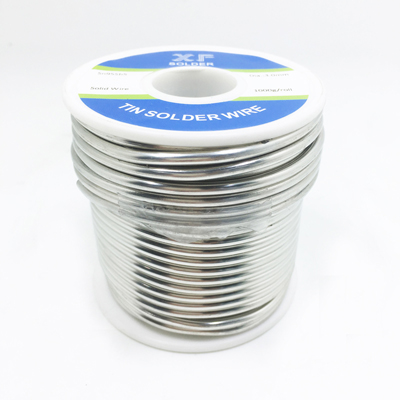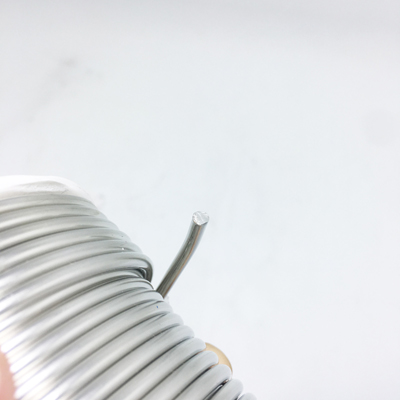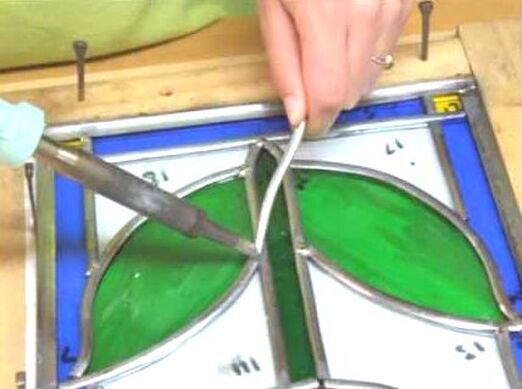Sn50Pb50 Tin Lead Stained Glass Solder
Sn50Pb50 Tin Lead Stained Glass Solder
Stained Glass Solder is a specialized type of soldering material used for creating
beautiful and intricate designs in stained glass projects. And common used type
is Sn50Pb50 solder. It is made up of a combination of 50% tin and 50% lead,
which gives it a unique melting point and flow properties that make it ideal
for use in stained glass work. In most cases, for stained glass soldering,
people will use solid tin lead solder without flux core, and then apply the external
flux. As most joinery of stained glass work is working on lead came &
copper componets. And a big wire diameter of solder above 2mm, normally 2.7mm or 3mm are more frequently used, as such thickness can give enough amount of solder during the stained glass work.


Key Benefits of Sn50Pb50 Tin Lead Stained Glass Solder:
Stained glass solder is a crucial component
in the process of creating stained glass pieces. It is used to join together
the individual pieces of glass that make up the design, and it must be strong
and durable enough to hold the glass in place for years to come. Sn50Pb50 tin lead
solder is widely considered to be one of the best choices for this type of
work, due to its low melting point, easy flow, and strong bonding properties.
One of the key benefits of Sn50Pb50 solder
is its low melting point. Stained glass work requires the use of a soldering
iron, which can get quite hot. If the solder has a high melting point, it can
be difficult to work with and may cause the glass to crack or break. Sn50Pb50 solder has a melting point of around 190℃ -216℃, which is low enough
to work with easily, but high enough to ensure a strong bond.
In addition to its low melting point,
Sn50Pb50 tin lead solder is known for its easy flow. This means that it melts
and spreads easily, allowing for precise and controlled application. This is
especially important when working with intricate designs, as it allows for a
smooth and even join between the pieces of glass. The proper type of flux is
also important for the solder to flow properly.
Another key benefit of Sn50Pb50 stained
glass solder is its strong bonding properties. When properly applied, it
creates a durable and long-lasting bond that will hold the glass in place for
years to come. This is especially important for pieces that will be hung in
windows or exposed to the elements, as they will need to withstand wind, rain,
and other external forces.
What should we pay attention to when using Sn50Pb50 Tin Lead Stained Glass Solder:
When using Sn50Pb50 stained glass solder,
it is important to follow proper operation guidelines. This typically involves
heating the soldering iron to the appropriate temperature and applying the tin
lead solder in a smooth, continuous line along the join between the pieces of
glass. It is also important to clean the area thoroughly before applying the
solder, as any dirt or debris can weaken the bond.
In addition to the basic operation
guidelines, there are a few other points to consider when working with Sn50Pb50
solder. First, it is important to use the right type of soldering iron for the
job. Stained glass work requires a low-wattage iron with a fine tip, as higher
wattage irons can cause the glass to crack or break. It is also important to
use proper ventilation when working with solder, as the fumes can be harmful if
inhaled.

Overall, Sn50Pb50 tin lead stained glass
solder is a versatile and reliable choice for creating beautiful and durable
stained glass pieces. Its low melting point, easy flow, and strong bonding
properties make it an ideal choice for a wide range of projects. With proper
operation and care, it can help create stunning stained glass designs that will
last for years to come.
If you are looking for a supplier of stained glass solder, please contact our sales team. Email: xfsolder@gmail.com or xfsolder@163.com ; Whatsapp/Wechat: 008613450770997

